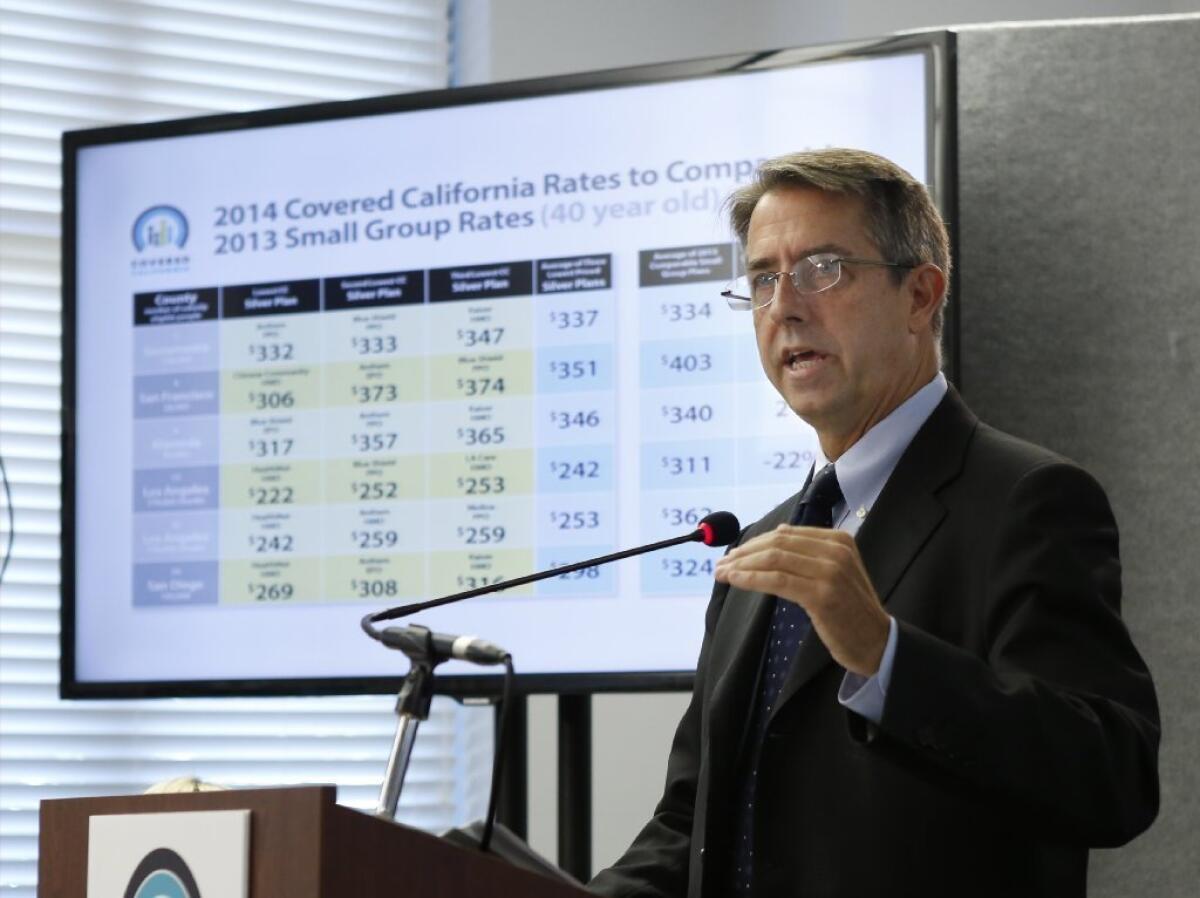State-run health insurance market and its effect on you [Live chat]

- Share via
With enrollment starting in four months, California’s new state-run health insurance market unveiled proposed rates last week that came in better than what many experts predicted.
Still, some consumers who don’t qualify for premium subsidies under the federal healthcare law could see substantially higher rates for their health coverage next year.
Join us for a live video chat about these issues at 2 p.m. with reporter Chad Terhune. You can join in on the conversation with your questions or comments.
Other guests on the chat will include Micah Weinberg, a senior policy advisor at the Bay Area Council, an employer-backed San Francisco group, and Bruce Jugan, an agent in Montebello and president of Benefitscafe.com, which sells health insurance to individuals and businesses.
Live chat: Ask your questions about California’s new health insurance market
Blue Shield of California, one major insurer participating in the Covered California marketplace, estimated that its existing policyholders would pay about 13% more for health insurance next year in the state exchange.
California officials issued a report earlier this year estimating that, compared with what individual policies cost now, premiums may rise an average of 30% for many middle-income residents who don’t get their insurance through their employers.
At the same time, lower-income consumers will reap the biggest savings and are projected to save as much as 84% off their coverage thanks to federal subsidies.
In California, individuals earning less than about $16,000 will qualify for an expansion of Medi-Cal, the state’s Medicaid program for the poor. Above that threshold, individuals making less than $46,000 and families earning below $94,000 annually will qualify for federal assistance.
Starting in January, most Americans will be required to have health insurance or face a penalty in 2014 of $95 or 1% of their income, whichever is greater. Enrollment in the new government-run exchange begins Oct. 1.
Keeping rates affordable is important in order to attract enough healthier, middle-income households that aren’t eligible for federal assistance and have to pay the full premium. Rates could jump if the exchange fails to enroll enough of those people to offset the higher costs of sicker, poorer policyholders.
ALSO:
Cedars-Sinai stands out for steep pricing
New California health insurance rates unveiled
Insurers limit doctors, hospitals in state-run exchange plans
More to Read
Inside the business of entertainment
The Wide Shot brings you news, analysis and insights on everything from streaming wars to production — and what it all means for the future.
You may occasionally receive promotional content from the Los Angeles Times.










